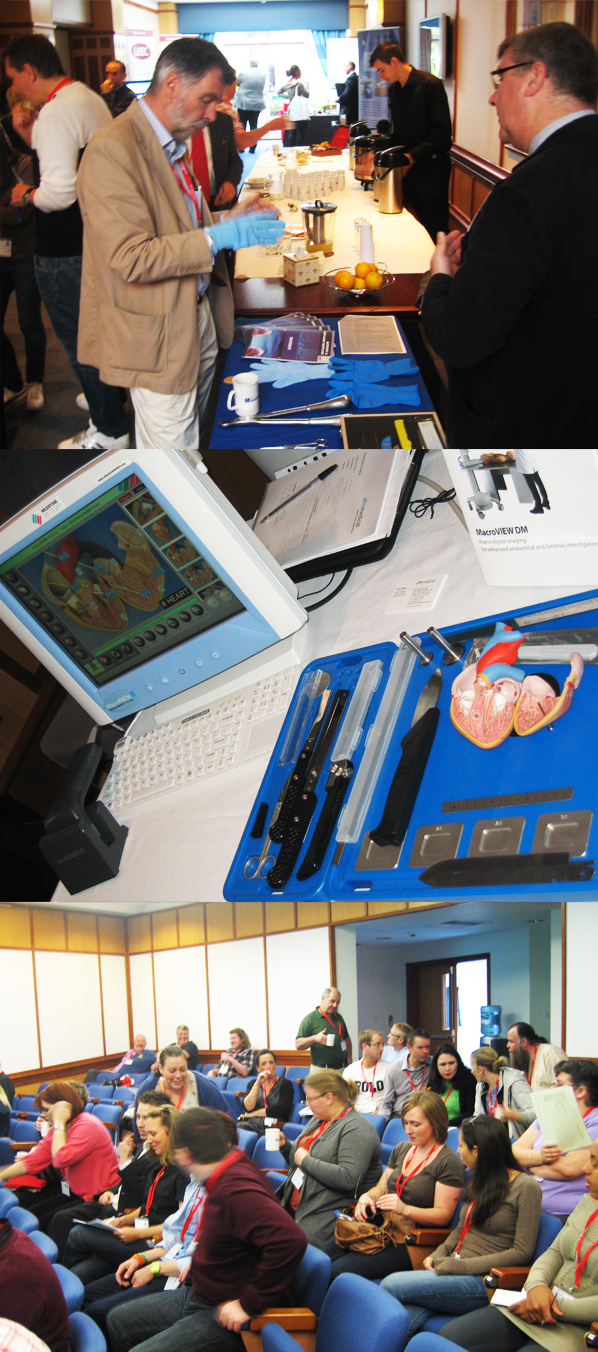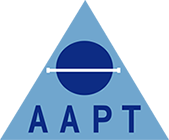News
The 7th Annual AAPT Conference
AAPT Council South & South Western lead John Pitchers summises another successful AAPT Conference held this year at the Beardmore Hotel & Conference Centre.
AAPT Council South & South Western lead John Pitchers summises another successful AAPT Conference held this year at the Beardmore Hotel & Conference Centre.
The 7th Annual AAPT conference was held in Glasgow for the second time, at the Beardmore Hotel & Conference Centre in Clydebank.
Following registration and coffee, a brief welcome was given by the AAPT Vice-Chair Ishbel Gall on behalf of the Chair James Lowell, who was unable to attend the conference due to commitments overseas.
Ishbel then handed over to Lydia Judge-Kronis, who chaired the morning session.
Resomation
Sandy Sullivan, Managing Director of Resomation Ltd delivered the first presentation of the day, which was an outline of the detail and benefits of the alkaline hydrolysis process Resomation as an alternative to cremation.
Sandy tackled the subject matter in a technical, but human and sensitive way, keeping the tone professional, but light.
This was a thought-provoking talk, which created a persuasive case for change, based on sound evidence. The benefits of Resomation are largely environmental, but the process is also tuned to the needs and wishes of the bereaved and, as such, is generating strong interest from the funeral industry and Local Authorities, with several sites ready to install the equipment once it is licensed for use in the UK.
The talk generated much interest amongst the delegates, which was demonstrated by the amount of questions put to Sandy at the end.
Where are we going in Education, Training and regulation?
Ishbel Gall gave the second presentation, on the subject of education, training and regulation.
This provided an update on the situation regarding the Modernising Scientific Careers (MSC) project and how it relates to the future of the profession. This can be a weighty and contentious topic, but Ishbel managed to maintain a relatively fleet-footed approach in a talk that brought together the different strands of MSC, VRC, CPD, etc. and provided an overview of the issues that will eventually affect all APTs in their future careers.
Now that the Arms-length Bodies Review looks to again change the way in which the profession is regulated in the future, the talk highlighted the work that the AAPT does behind the scenes to keep up the profile of APTs and to push for suitable professional development.
The session finished with questions, which showed that APTs are very much engaged with the future of their profession, but are sometimes concerned about the direction of travel or the progress being made – especially in light of the uncertainty surrounding regulation and the roadblocks to our professional development that must be overcome.
"Not just a Life of Crime"
After a break for coffee and a visit to the trade stands, the programme continued with a presentation on the role of the Procurator Fiscal (PF), delivered by David Green, Fife Area Procurator Fiscal.
This was a very well received talk, delivered with humour and a healthy dose of light-hearted cynicism, on his main roles and some of the differences (and similarities) between the PF and Coroner’s systems – this was especially interesting and useful for us APTs from ‘down south’, as it’s not a position we get to hear a great deal about.
For me, this talk highlighted some very important points, such as the importance of a proper and impartial investigation into death, free from political influence or interference, and certain jurisdictional differences between the Coroner’s system (i.e. broadly speaking, the deceased falls under the jurisdiction of the Coroner’s area in which the body lies) and the PF system (i.e. PF in the area in which the event that led to the death occurred has jurisdiction).
'Anthrax Infection in Drug Abusers: Yet Another Hazard'
The next presentation was entitled 'Anthrax Infection in Drug Abusers: Yet Another Hazard' and was delivered by Dr. John Clark, Consultant Forensic Pathologist, University of Glasgow.
Dr. Clark’s talk centred on the 2010/11 Anthrax outbreak in the United Kingdom (predominantly in the West of Scotland), amongst drug abusers, and provided a structured, informative and relevant insight into a hazard which any APT could face, but that receives little attention outside of affected areas.
This talk was all the more satisfying for the fact that it didn’t just focus on the narrow and specific subject of the death of drug abusers, but explored wider themes, such as the characteristics of the bacterium and the route taken by heroin smugglers from harvest (UK’s heroin mostly originates in Afghanistan), to the streets of your local town.
During the talk, common myths around the subject were cut through with clear, concise information that included fascinating epidemiological, pathological, and microbiological information, as well as practical information on the precautions to be taken at PM.
Afternoon Session
After lunch and a visit to the trade stands, the programme continued, with Zoe Rutherford taking over as Chair for the afternoon session.
Shaken Baby Syndrome
The next topic ‘Paediatric Neurotrauma’ had the potential to be a very emotive subject, but was handled in a very tactful and factual way by the speaker Colin Smith, Reader in Pathology, University of Edinburgh University, which lessened the emotional impact.
This is evidently a very complex and contentious area of pathology, which requires a very balanced and impartial view when determining the cause of such injury – a fact that was highlighted during the course of the talk, when Colin described the triad of pathological features that tend to be taken as proof of inflicted injury in children, namely subdural haemorrhage, retinal haemorrhages and encephalopathy. There is considerable debate surrounding the validity of this association, and the talk tackled the tendency to rely on such dogma, an approach that can cause subsequent legal problems.
Colin described various theories and arguments in relation to both sides of the argument in a balanced and objective way, which made the finer points of such a complex subject easier to digest.
The Personalisation of Death in a Mass Fatality Incident
Up next was Stephen Nimmo, Director of Chester Pearce Associates UK, with a presentation entitled ‘The Personalisation of Death in a Mass Fatality Incident’, in which Stephen stated the case for a different approach to bereavement care in such incidents, specifically the importance of creating a private, personal experience in what is, by its very nature, a common experience shared by many.
The talk explored several themes around bereavement, which although logical, may not be standard practice. Whilst undoubtedly a logical and fresh viewpoint, influencing a more holistic attitude to bereavement care is a challenging undertaking, requiring a change in culture in many organisations, including the NHS, Local Authorities, Funeral Directors, and Emergency Response Services. Stephen used case studies and past experience as a support for a more empathetic, pragmatic and level response to incident management.
The Role of the Modern APT
Following another healthy dose of caffeine and trade, Dr. Carol Komaromy, Senior Lecturer in Health Studies for the Open University & Kate Woodthorpe, Lecturer in Sociology for University of Bath joined us for a presentation of their research findings.
Drs. Komaromy and Woodthorpe have recently completed a British Academy sponsored report entitled ‘Investigating Mortuary Services in Hospital Settings’, which involved a small-scale project exploring the role of the hospital APT through direct observation and semi-structured interviews with APTs, Bereavement Care Officers, and Service Managers on one hospital site.
The stated aim was to provide answers to the following questions:
- What does the role of the hospital APT cover?
- What is the nature of their job in the public and professional interface of pathology services?
- How do APTs interpret their professional identity?
It is this last question that, to me, is the most intriguing. The role of the APT has, in the last few decades, seemingly changed beyond all recognition and, as a consequence of this, the attitudes of the staff employed in these roles and other professionals who come into contact with mortuary staff have altered in relation to the APTs’ ‘identity’. It must be said that a study involving one site was always going to be limited when describing a professional group as a whole, but this was an interesting multi-layered assessment of the role from the perspective of an ‘outsider’ – something that rarely happens. Indeed, it was actually gratifying to see such enthusiasm and interest directed toward the examination of a role that is so often overlooked or even derided in some cases, by other health professionals.
It is also worth noting that the aims of the profession can be very well supported by this kind of academic research, especially when dealing with the direction in which the 'powers that be' may want to move the professional development of a particular staff group, such as APTs - http://opus.bath.ac.uk/22612/
Chemical Suicides - Met Police
The final presentation of the day, was ably delivered, despite the pressure of a time over-run, by PC Richard Mead of the Metropolitan Police’s CBRN Unit, and was entitled 'Chemical Suicides'.
PC Mead presented a practical, pragmatic walk through of some of the causes (e.g. internet suicide chat rooms), issues, and dangers associated with people who have committed suicide by inhaling or ingesting chemicals. His use of case studies and personal experience made for a talk that was very useful and interesting for those APTs who have little or no experience of chemical-related deaths, and highlighted some stark differences between practices in different force areas.
Throughout the talk, the watchword was always ‘safety’, and the point was made that, although some of the precautions and equipment may seem over-the-top, it’s always better to have too many precautions, than too few – a sentiment that reflects standard practice in the APT world.
The presentation was followed by a good number of questions, showing that this subject is particularly topical as the number of chemical suicides rises.
The AAPT President, Professor Sebastian Lucas, closed the conference with words of thanks for the organisers of the conference.
As always, thanks go to all of the trade participants for their support of the conference, and to LEEC and Mopec Europe for very kindly sponsoring the Friday curry and the conference dinner respectively.
See you all in Bristol next year!
John Pitchers FAAPT
South & South-West Lead

Images from AAPT Conference 2011. From top: Professor Sebastian Lucas at the Medezine stand, display from the trade show and delegates taking their places at the start of the conference.
